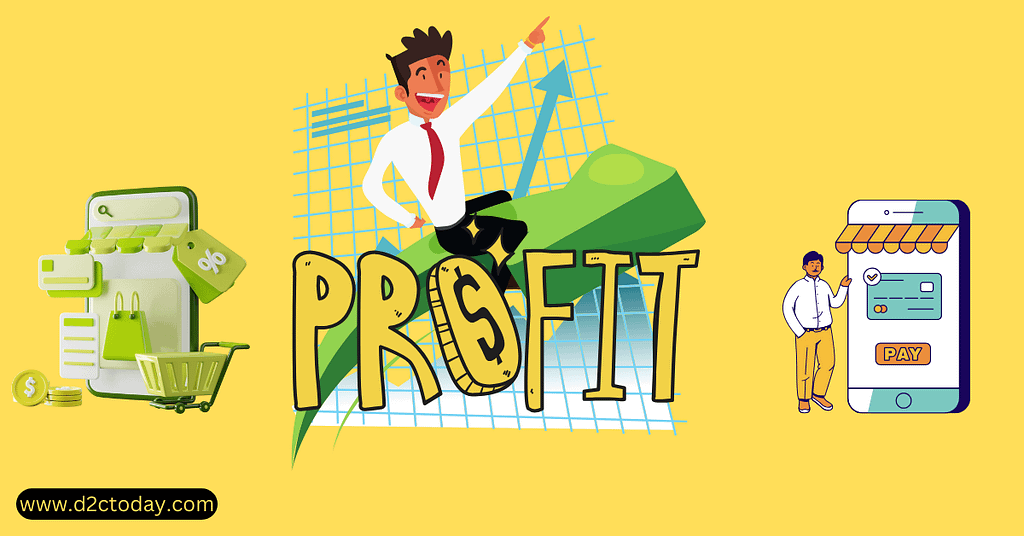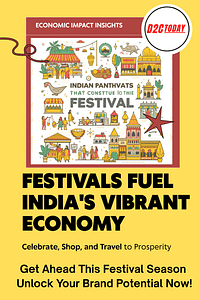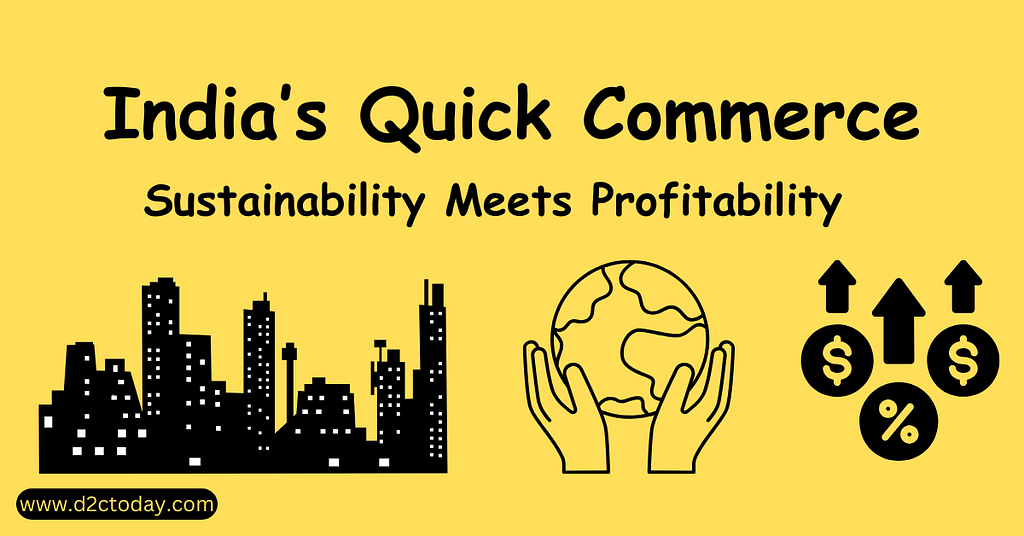India’s quick commerce industry is rapidly expanding beyond metro cities, with emerging urban centres becoming the new battleground for growth. While companies like Zepto and Blinkit are scaling operations in Tier-2 and Tier-3 cities, sustainability and profitability remain pressing challenges.
Innovations such as electric delivery fleets and hyperlocal sourcing are gaining traction, but the balance between speed and cost-efficiency is delicate. In 2024, India’s quick commerce market grew by over 18%, driven by demand for convenience and eco-conscious choices. This Newsletter explores how emerging cities, sustainable innovations, and profitability hurdles are shaping the future of India’s quick commerce sector.
Emerging Cities – The Next Frontier for Quick Commerce
Quick commerce growth in India, once dominated by metros like Delhi, Mumbai, and Bengaluru, is now spreading to Tier-2 and Tier-3 cities. These emerging markets hold significant untapped potential, driven by rising internet penetration, growing disposable incomes, and evolving consumer preferences.
Why Emerging Cities Are Attractive ?
Emerging cities in India are becoming attractive for quick commerce due to their untapped potential, growing consumer base, and increasing digital penetration. These cities often have lower operational costs compared to metro areas, enabling companies to scale efficiently.
Rising disposable incomes and lifestyle shifts in Tier-2 and Tier-3 cities are driving demand for convenience-focused services like quick commerce. Additionally, the adoption of smartphones and improved internet connectivity is expanding the e-commerce ecosystem. Emerging cities also offer an opportunity to build strong customer loyalty as they transition from traditional shopping habits to modern delivery solutions, creating a fertile ground for long-term growth.
Rising Internet Penetration
- Over 850 million Indians now have internet access, with 60% of new users hailing from non-metro cities.
- With affordable smartphones and low data costs, platforms like Blinkit and Zepto are witnessing increased app downloads in cities like Jaipur, Indore, and Patna.
Changing Lifestyles
- Urbanization and dual-income households are on the rise in Tier-2 cities. Consumers now demand convenience comparable to their metro counterparts.
- Indore, one of the fastest-growing cities in India, saw quick commerce order volumes grow by 120% in 2023, driven by young professionals.
Smaller Cities with Big Spending Power
- Cities like Chandigarh, Kochi, and Surat have affluent populations willing to pay a premium for speed and quality.
- Chandigarh residents contributed 15% of Zepto’s total revenue from North India in 2024.
Operational Challenges in Smaller Cities
India’s quick commerce market is surging, with its valuation projected to grow from $5 billion in 2022 to $20 billion by 2027, at a CAGR of 27%. Emerging cities are playing a crucial role in this expansion, driven by rising smartphone penetration, which crossed 76% in 2023, and a growing middle-class population.
However, operational challenges persist—last-mile delivery costs in Tier-2 and Tier-3 cities are 20-30% higher due to low order density. Additionally, infrastructure gaps and fragmented supply chains hinder scalability. Companies like Zepto and Swiggy Instamart are addressing these hurdles by leveraging AI for route optimization and building localized supply networks.
Cities like Nagpur, Vijayawada, and Lucknow have become top markets for quick commerce startups, with annual order growth exceeding 80%.
Infrastructure Gaps
- Unlike metros, emerging cities often lack the logistics and transport infrastructure required for ultra-fast deliveries.
- Solution in Practice: Swiggy Instamart has invested in smaller, low-cost dark stores closer to residential clusters to overcome these challenges.
Educating New Users
- Many consumers in smaller cities are new to quick commerce, requiring awareness campaigns.
- Example: Zepto’s marketing strategy in Jaipur focused on promoting its “10-minute promise” through local influencers and vernacular advertising.
Lower Population Density
- Unlike metros, where high population density allows for clustering of orders, smaller cities require efficient cost management due to dispersed delivery locations.
- Innovation: Platforms are testing hub-and-spoke models, where larger hubs service smaller dark stores to optimize logistics.
Sustainability Innovations in Quick Commerce
As the quick commerce industry scales, its environmental impact becomes a growing concern. Sustainability is no longer optional but a necessity to attract eco-conscious consumers and align with government regulations.
Adoption of Electric Vehicles (EVs)
- Platforms like Swiggy Instamart and Blinkit are rapidly switching to EVs for last-mile delivery.
- Impact: Swiggy’s fleet of 8,000 EVs saved over 15,000 tons of CO2 emissions in 2024.
- Future Plans: Zepto has committed to making 50% of its deliveries emission-free by 2026.
Bicycle Deliveries
- In high-density areas, companies are using bicycles for short deliveries to reduce their carbon footprint.
- Blinkit uses bicycles for 5% of its deliveries in parts of Bengaluru and Pune, cutting costs and emissions.
Biodegradable Packaging
- Single-use plastics are being replaced by biodegradable alternatives made from paper or cornstarch.
- Swiggy Instamart introduced 100% compostable bags for fresh produce orders, aiming for zero-waste operations by 2025.
- Amazon India’s pilot program for returnable packaging allows consumers to return delivery bags for reuse.pilot programs in Delhi NCR reduced packaging waste by 25% in six months.
Renewable Energy in Dark Stores
- Many quick commerce companies are powering dark stores with renewable energy sources like solar panels.
- BigBasket’s flagship dark store in Hyderabad runs on 70% solar energy, reducing energy costs by 30%.
Profitability Challenges in Quick Commerce
While quick commerce has revolutionized convenience, its profitability remains under scrutiny. The high cost of ultra-fast deliveries, coupled with low AOV, poses significant financial hurdles.
High Operational Costs
- Delivery accounts for 50%–60% of total order costs in quick commerce.
- Low-margin products like groceries make profitability challenging.
- Case in Point: Blinkit reported losses of ₹350 crore ($42 million) in FY 2023 despite revenue growth.
- Dark stores require high investments in infrastructure, inventory management, and workforce.
- Solution in Action: Companies like Zepto are experimenting with shared dark stores in less populated regions to reduce overhead costs.
Discount Wars
- Competitive pricing and heavy discounts have created a race to the bottom, with players prioritizing customer acquisition over margins.
- During the festive season in 2024, platforms offered discounts of up to 30% on essentials, squeezing already thin margins.
Achieving Economies of Scale
- Profitability depends on clustering multiple orders within a small delivery radius.
- Success Metric: Zepto’s operational break-even in Mumbai was achieved by increasing order density to 15 orders per km per day.
- Platforms must upsell or cross-sell higher-margin items like personal care or imported goods to improve AOV.
- Innovation: Swiggy Instamart introduced curated “luxury baskets” featuring premium products to boost margins.
Strategies for Profitability
- Subscription Models: Encouraging customers to pay a recurring fee for free deliveries (e.g., Blinkit Prime) ensures predictable revenue.
- Tech-Driven Efficiency: AI reduces inefficiencies in inventory stocking, routing, and workforce allocation.
- Regional Partnerships: Collaborations with local suppliers can lower inventory costs.
In Summary
The future of quick commerce lies at the intersection of emerging city expansion, sustainable innovation, and profitability management. By addressing infrastructure challenges in smaller cities, prioritizing green initiatives, and innovating for profitability, the industry can achieve sustainable growth.

Quick commerce companies must balance growth with cost optimization. Innovations in tech, sustainability, and operational efficiency will be key to breaking even.
India’s quick commerce sector is poised to redefine the future of retail, balancing rapid expansion with sustainability and profitability. As emerging cities become key growth hubs, companies must innovate with green technologies, optimize hyperlocal delivery systems, and adapt to evolving consumer demands.
The integration of AI-driven logistics and renewable energy-powered fleets could revolutionize efficiency while reducing environmental impact. However, the race for market dominance will depend on who masters the delicate balance between cost-efficiency and customer satisfaction. In this high-stakes industry, the future belongs to those who cannot only deliver quickly but also responsibly and sustainably.
Key Takeaways for Industry Professional
- Emerging Cities: Focus on localizing offerings and optimizing logistics for low-density areas.
- Sustainability: EVs, renewable energy, and eco-friendly packaging will define the industry’s long-term success.
- Profitability: A combination of tech-driven cost efficiencies, higher AOV, and subscription models can ensure sustainable operations.
As the quick commerce sector matures, industry leaders must prioritize strategic innovation to stay ahead in this fiercely competitive market. The race isn’t just about delivering faster—it’s about delivering smarter, greener, and more profitably.
FAQs
- What is quick commerce, and how does it work?
Quick commerce refers to rapid delivery services, often within 10-30 minutes, for groceries, daily essentials, and small consumer goods, enabled by hyperlocal delivery networks and technology. - Which companies are leading the quick commerce sector in India?
Key players include Blinkit, Zepto, Swiggy Instamart, Amazon, and Reliance JioMart. - Why are Tier-2 and Tier-3 cities crucial for quick commerce?
These cities offer untapped markets, rising consumer demand, and lower operating costs compared to metros, driving growth opportunities. - What are the biggest operational challenges in smaller cities?
Challenges include underdeveloped infrastructure, lower order density, price-sensitive consumers, and fragmented supplier networks. - How does technology play a role in quick commerce?
AI, machine learning, and real-time data analytics optimize inventory, predict demand, and streamline logistics for faster deliveries. - Is quick commerce sustainable?
Sustainability remains a challenge, but companies are adopting electric delivery vehicles, reusable packaging, and hyperlocal sourcing to reduce their environmental impact. - How has consumer behaviour impacted quick commerce growth?
Consumers increasingly demand convenience, speed, and availability, fuelling the rise of instant delivery services. - What is the projected growth of quick commerce in India?
India’s quick commerce market is expected to reach $20 billion by 2027, growing at a CAGR of 27%. - How does quick commerce compare globally?
India is following global leaders like China and the U.S., where quick commerce markets are valued at $92.68 billion and $25 billion, respectively. - What are the future trends in quick commerce?
Future trends include deeper penetration into rural markets, advanced AI adoption, drone deliveries, and an increased focus on sustainability and profitability.







